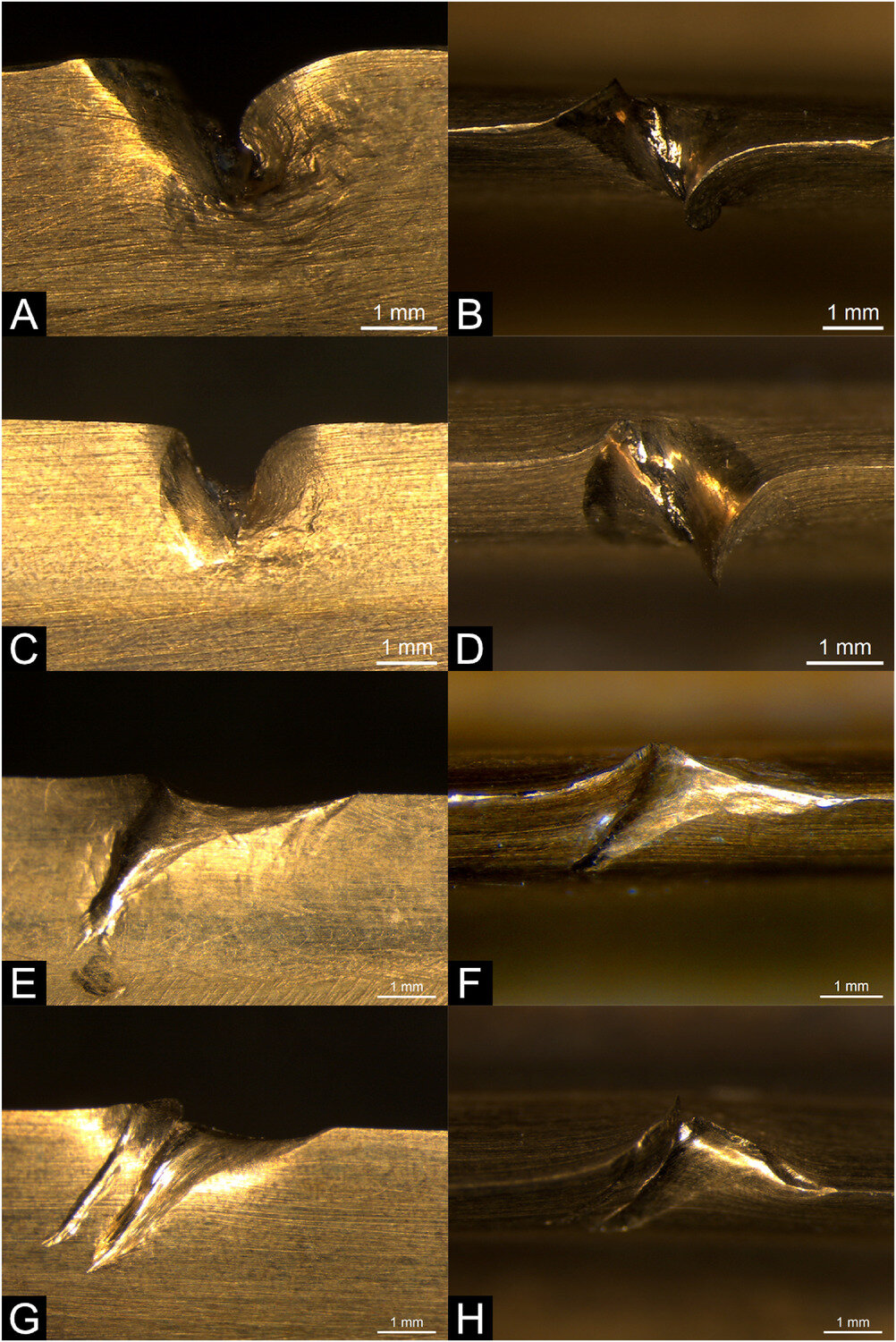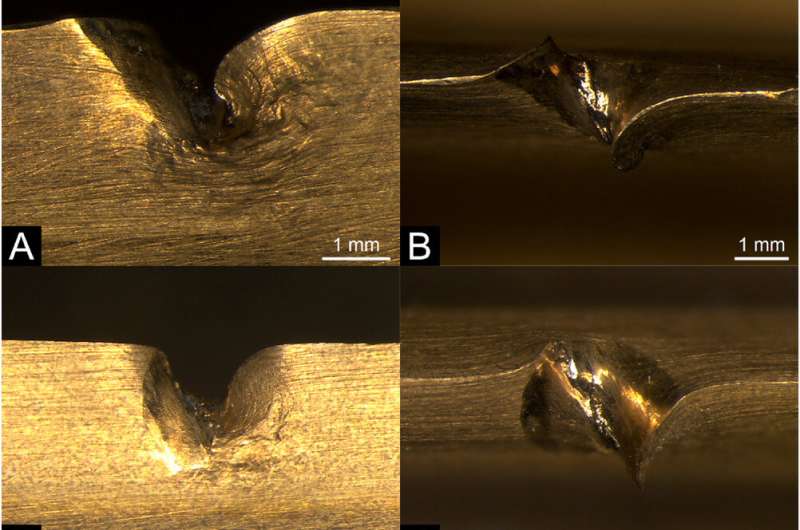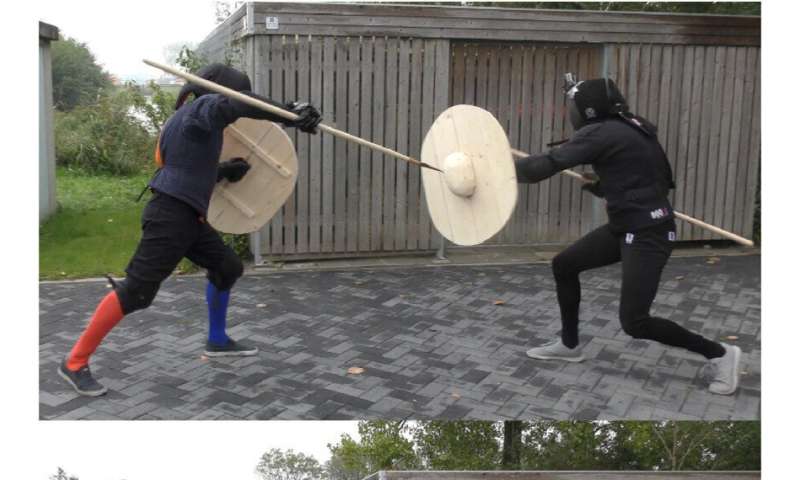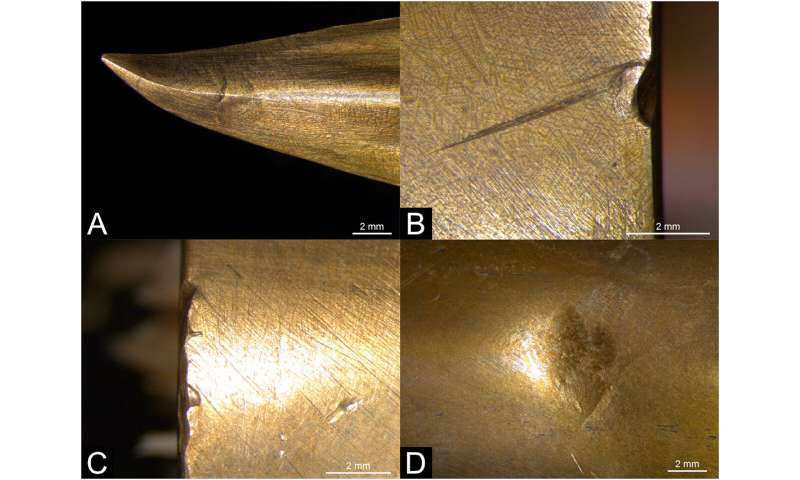

How can we tell whether and how a prehistoric weapon was used? How can we better understand the dexterity and combat skills involved in Bronze Age spear fighting?
A research team including scientists from Göttingen University presents a new approach to answering these questions: They simulated the actual fight step-by-step to get new insights into fighting styles and the formation of marks on the weapons. In addition, they took into account how these marks change over time. Their findings were published in the Journal of Archaeological Science.
Studying Bronze Age spear fighting helps researchers better understand battle strategies and the development of weapons. Experimental methods can be used to investigate how spears interact with different materials as well as how the marks form and what they mean. For this reason, the team constructed replicas of Bronze Age spears and used them in realistic combat scenarios to see how the spearheads reacted against metal blades, wooden shafts and shields. The researchers also used animal tissues to mimic the human body.
The team used knowledge pooled from previous research to develop this reliably repeatable method to better understand the dynamics of combat and the formation of marks on the weapons. These experiments make it possible to examine the type and frequency of collisions in spear fighting, and for the first time, show how impact marks on spears develop over time.
-

Experiment with experienced fighters who spar freely using different styles. From top to bottom: one-handed spear and shield, two-handed spear with binding, two-handed spear strike. Credit: Journal of Archaeological Science (2024). DOI: 10.1016/j.jas.2024.106044
-

The wear and tear of bronze spearheads during the free spear fighting experiment: (A) bent tip; (B–C) socket rim damage; (D) round depression. Credit: Journal of Archaeological Science (2024). DOI: 10.1016/j.jas.2024.106044
The tests provided clues to the skills required for various fighting techniques and produced precious information for the reconstruction of combat encounters from the marks that the weapons bear on their surface. In fact, the experimentally generated marks successfully mirrored those found on weapons in many archaeological finds. This means that it is now possible to reconstruct if and how Bronze Age spears in museum collections were used.
“Our experiments will benefit future research, because we have created a useful guide to recognize and understand the wear and tear on Bronze Age weapons. This information source will enable researchers and museum curators to study the objects already in their samples and collections with a fresh perspective. They can compare the marks they find with the ones we have documented and made freely available,” explains Dr. Valerio Gentile, who carried out the study as part of his Ph.D. studies at the University of Leiden and is now conducting similar research in the Department of Prehistory and Early History at the University of Göttingen.
“Our findings show how weapons were used and what techniques were employed. We may also be able to use our research to find out whether the Bronze Age weapons were used in large-scale battles or in duels. This is important for understanding the nature and intensity of conflicts in the past.”
More information:
V. Gentile et al, Multi-stage experiments in Bronze Age spear combat: insights on wear formation, trauma, and combat contexts, Journal of Archaeological Science (2024). DOI: 10.1016/j.jas.2024.106044
Provided by
University of Göttingen
Citation:
Experimental archaeology sheds light on skill and technique in Bronze Age spear combat (2024, October 8)
retrieved 8 October 2024
from https://phys.org/news/2024-10-experimental-archaeology-skill-technique-bronze.html
This document is subject to copyright. Apart from any fair dealing for the purpose of private study or research, no
part may be reproduced without the written permission. The content is provided for information purposes only.

